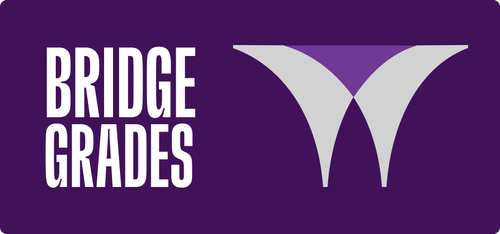Next Steps#
Interactive Weight Configuration Dashboard#
We are currently developing a comprehensive interactive dashboard that will allow researchers, policymakers, and interested stakeholders to experiment with different weight configurations for the Bridge Grades methodology. This tool will provide unprecedented transparency and flexibility in understanding how different factors contribute to collaboration scores.
Dashboard Features#
Dynamic Weight Adjustment Interface
Real-time Weight Sliders: Interactive controls for each data source (A, B, C, D, E, F) allowing users to adjust weights from 0 to 10
Instant Score Recalculation: Live updates of Bridge Grades as weights are modified
Visual Feedback: Immediate visualization of how weight changes affect grade distributions
Preset Configurations: Pre-loaded weight sets for different analytical perspectives (e.g., “Action-Focused”, “Communication-Heavy”, “Balanced”)
Weight Impact Analysis
Sensitivity Testing Tools: Analyze how changes in individual source weights affect overall results
Scenario Modeling: Compare multiple weight configurations side-by-side
Impact Visualization: Charts showing how weight changes affect grade distributions by party, chamber, and state
Statistical Validation: Built-in metrics to ensure weight combinations maintain methodological integrity
Example Use Cases#
Scenario 1: Emphasizing Legislative Action
# Example weight configuration prioritizing legislative collaboration
weights = {
'A': 5.0, # Bill authorship with cross-party support (increased)
'B': 4.0, # Cross-party cosponsorship (increased)
'C': 0.5, # Bipartisan communication sum (decreased)
'D': 0.5, # Bipartisan communication percentage (decreased)
'E': 1.0, # Personal attack sum (maintained)
'F': 1.0 # Personal attack percentage (maintained)
}
Scenario 2: Balancing Communication and Action
# Example weight configuration balancing rhetoric and legislative behavior
weights = {
'A': 2.5, # Bill authorship with cross-party support
'B': 2.0, # Cross-party cosponsorship
'C': 2.0, # Bipartisan communication sum (increased)
'D': 2.0, # Bipartisan communication percentage (increased)
'E': 1.5, # Personal attack sum (increased penalty)
'F': 1.5 # Personal attack percentage (increased penalty)
}
Scenario 3: Communication-Focused Analysis
# Example weight configuration emphasizing public communication patterns
weights = {
'A': 1.0, # Bill authorship with cross-party support (decreased)
'B': 1.0, # Cross-party cosponsorship (decreased)
'C': 3.0, # Bipartisan communication sum (increased)
'D': 3.0, # Bipartisan communication percentage (increased)
'E': 2.0, # Personal attack sum (increased penalty)
'F': 2.0 # Personal attack percentage (increased penalty)
}
Expected Impact#
This interactive dashboard will enable users to:
Test Hypotheses: Explore how different weight configurations affect specific legislators or groups
Validate Methodology: Ensure the scoring system remains robust across different weight scenarios
Customize Analysis: Adapt the Bridge Grades framework for specific research questions or policy objectives
Enhance Transparency: Provide complete visibility into how different factors contribute to final scores
Automated Data Pipeline Development#
We are actively working on automating the data extraction process from various sources to eliminate manual data collection and ensure timely, accurate updates to the Bridge Grades system. This automation will significantly improve the scalability and reliability of our methodology.
Current Data Collection Challenges#
Manual Processes
Time-Intensive Updates: Current data collection requires manual downloads and processing from multiple sources
Human Error: Potential for mistakes during manual data handling and processing
Scalability Limitations: Manual processes become increasingly difficult as data sources expand
Automated Pipeline Architecture#
API Integration
Plural Policy API: Automated extraction of bill sponsorship data for Sources A and B
Americas Political Pulse API: Real-time communication data collection for Sources C, D, E, and F
VoteView API: Automated retrieval of ideological scores for Source N
Cook Political API: Scheduled updates of PVI data for Source M
Web Scraping Infrastructure
Problem Solvers Caucus: Automated monitoring of membership changes for Source P
Congressional Records: Real-time scraping of official congressional data
Social Media Monitoring: Automated collection of legislator communications
News and Press Releases: Systematic collection of public statements
Scheduling and Monitoring
Automated Scheduling: Daily, weekly, and monthly data collection cycles based on source update frequencies
Quality Monitoring: Automated validation checks to ensure data integrity
Error Handling: Robust error handling and notification systems
Performance Tracking: Monitoring of data collection performance and success rates
Expected Benefits#
Operational Improvements
Reduced Manual Labor: Eliminate time-consuming manual data collection processes
Increased Accuracy: Minimize human error through automated validation
Faster Updates: Real-time or near-real-time data updates
Scalability: Easy addition of new data sources without proportional increase in manual work
Research and Analysis Benefits
More Frequent Updates: Ability to provide more current Bridge Grades assessments
Historical Tracking: Better longitudinal analysis capabilities
Data Consistency: Standardized data collection processes across all sources
Reproducibility: Fully documented and automated data collection methodology
Looking Forward: The Future of Bridge Grades#
We are incredibly excited about the potential of these developments to transform how we measure and understand congressional collaboration. The combination of an interactive weight configuration dashboard and fully automated data collection will create a powerful, transparent, and accessible tool for:
Researchers studying congressional behavior and bipartisanship
Policymakers seeking to understand collaboration patterns
Journalists reporting on congressional effectiveness
Voters making informed decisions about their representatives
Advocacy Groups promoting bipartisan collaboration
These technological advances will ensure that Bridge Grades remains at the forefront of objective congressional assessment, providing timely, accurate, and customizable insights into the collaborative behavior of our elected officials.
The future of congressional accountability is data-driven, transparent, and interactive—and we’re building it today.
